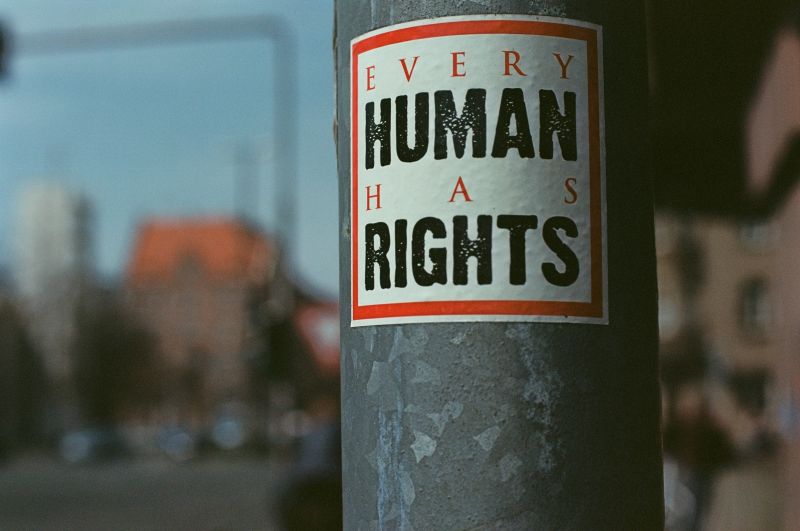
New Zealand is performing badly on upholding the right to education. Image by Markus Spiske on Unsplash.
<h2><span data-contrast="auto">New Zealand is “bad” at upholding the right to education, according to the latest data published by the </span><a href="https://rightstracker.org/country/NZL?tab=report-esr&;pb=adjusted&;as=hi&;qolFdScore=hrmi" target="_blank"><span data-contrast="none">Human Rights Measurement Initiative (HRMI)</span></a><span data-contrast="auto">. </span><span data-ccp-props="{";201341983";:0,";335559739";:160,";335559740";:279}"> </span></h2>
<p><span data-contrast="auto">The HRMI measures and tracks the economic and social, and civil and political rights of countries around the world. It published the latest statistics for New Zealand last week. </span><span data-ccp-props="{";201341983";:0,";335559739";:160,";335559740";:279}"> </span></p>
<p><strong><a href="https://www.schoolnews.co.nz/latest-print-issue/" target="_blank" rel="noopener">Read the latest print edition of <em>School News</em> HERE</a></strong></p>
<p><span data-contrast="auto">The right to education is measured against an income adjusted benchmark and the global best. For the income adjusted benchmark, New Zealand’s right to education is measured against countries with similar income level. </span><span data-ccp-props="{";201341983";:0,";335559739";:160,";335559740";:279}"> </span></p>
<p><span data-contrast="auto">According to the HRMI, “every country can receive 100 percent against this benchmark if they use their available resources effectively.”</span><span data-ccp-props="{";201341983";:0,";335559739";:160,";335559740";:279}"> </span></p>
<p><span data-contrast="auto">A lower score means improvement using available resources is possible, and necessary.</span></p>
<p><span data-contrast="auto">But for both the income adjusted benchmark and the global best measurement, New Zealand’s performance has been rated “bad” by the HRMI. </span><span data-ccp-props="{";201341983";:0,";335559739";:160,";335559740";:279}"> </span></p>
<p><span data-contrast="auto">When disaggregated, New Zealanders’ right to secondary education is rated as “fair”, but our right to a quality education in maths and reading is ranked as “very bad”. The right to a quality education in science is also deemed “bad”. </span><span data-ccp-props="{";201341983";:0,";335559739";:160,";335559740";:279}"> </span></p>
<p><span data-contrast="auto">Females’ right to education is rated slightly higher than males. Indigenous people, people experiencing homelessness, people with disabilities and people with low social or economic status are more likely to have their right to education violated. </span><span data-ccp-props="{";201341983";:0,";335559739";:160,";335559740";:279}"> </span></p>
<figure id="attachment_31036" aria-describedby="caption-attachment-31036" style="width: 300px" class="wp-caption alignnone"><img class="size-medium wp-image-31036" src="https://www.schoolnews.co.nz/wp-content/uploads/2024/06/charlein-gracia-Ux5mdMJNEA-unsplash-300x201.jpg" alt="" width="300" height="201" /><figcaption id="caption-attachment-31036" class="wp-caption-text">Children are also among the groups ranked low on their access to education due to factors like child poverty. Image by Charlein Gracia on Unsplash.</figcaption></figure>
<p><a href="https://www.thepost.co.nz/nz-news/350315758/nz-very-bad-guaranteeing-right-good-education-fair-income-survey" target="_blank"><span data-contrast="none">Prudence Walker</span></a><span data-contrast="auto">, Disability Rights Commissioner, said disabled children were among the most impacted as they were frequently discouraged from enrolling in local schools and often denied reasonable accommodation. She wants to see the Government co-design support structures with disabled people to better uphold their human rights. </span><span data-ccp-props="{";201341983";:0,";335559739";:160,";335559740";:279}"> </span></p>
<p><span data-contrast="auto">“Evidence suggests that disabled students who have been genuinely included in education are more likely to contribute in all the ways they want to and be able to live dignified lives.”</span><span data-ccp-props="{";201341983";:0,";335559739";:160,";335559740";:279}"> </span></p>
<p><span data-contrast="auto">The right to education is defined according to international law, where everyone has the right to a “quality, relevant and culturally appropriate education.” </span><span data-ccp-props="{";201341983";:0,";335559739";:160,";335559740";:279}"> </span></p>
<p><span data-contrast="auto">Primary, secondary, higher, technical/vocational and fundamental education should be physically accessible and financially affordable.</span></p>

NZCER found generative AI tools are frequently used to support teaching and learning in primary…
The Ministry decision to discontinue a reading resource over kupu Māori has angered the sector…
NCEA was designed to broaden educational success, explains David Pomeroy from the University of Canterbury.
More than just a break from the classroom, a visit to a zoo or wildlife…
Without proper maintenance and care, trees can become a hazard. Are your trees in need…
Loneliness and social disconnection negatively impact wellbeing. A new WHO report finds teens feel the…
This website uses cookies.